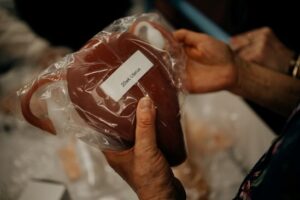When you're dealing with "women's issues," especially ones involving your period, it can be hard to get an adenomyosis vs endometriosis diagnosis. After all, having painful periods, heavy bleeding, and/or chronic pelvic pain could be the result of several different conditions.
For some women, these concerns will lead to a fibroids diagnosis. But two other concerns could also be tom blame: endometriosis, a condition in which your endometrial tissue leaves the uterus, implanting in other parts of your body. As a result, during your period, that wayward endometrial tissue starts shedding wherever it's landed, and that can lead to pelvic pain, along with scar tissue, cysts, adhesions, and more
Now, adenomyosis causes similar symptoms, but condition is quite different. When you have adenomyosis, your endometrial tissue migrates inside your uterine muscles, without exiting the uterus. Of course, you could have endometriosis and adenomyosis at the same time. Still, there are a few key ways we can differentiate between adenomyosis vs endometriosis.

This uterine condition causes an enlarged uterus because the endometrial lining grows in the organ's muscular wall. Soon, painful periods can become a problem. And that's a result of blood having to pass through your uterine walls and vaginal canal.
The Office on Women's Health estimates that close to 11% of American women suffer from endometriosis. This condition also affects the uterine lining, with endometrial tissue growing outside the uterus. Here, many different organs could be involved, including your ovaries and fallopian tubes, or just your pelvis. With endometriosis, the arrival of your period is extremely painful because the wayward endometrial gets stuck without a path to the vaginal canal.
While endometriosis and adenomyosis both cause pelvic pain and heavy bleeding, the timing of symptoms varies by condition. If you have adenomyosis, your pain is usually limited to your period. (However, you may experience spotting between periods.) But if you have endometriosis, you could experience pain for several days before, during and after your cycle. Plus, you could experience pain with bowel movements and at all throughout the month.
Much like fibroids, we don't know why some women develop these conditions while others don't. Still, we do know that the risk factors for each condition are quite distinct.
Factors that may increase your risk for adenomyosis include:
While some people think you can only develop endometriosis after turning 35, any woman who menstruates is at risk. Additionally, your risk may increase if you:
In each condition, trouble begins when uterine tissue grows in the wrong place. While that's a similar concern, we'll employ different methods to diagnose and treat each concern. The process begins with some detective work: with adenomyosis, your uterine tissue will penetrate the uterus' muscular wall, leading to more severe symptoms than the initial signs of endometriosis.
What does that look like? With an adenomyosis period, you could experience a gushing flow. In turn, you may develop dizziness, an iron deficiency or anemia. Also, chronic pelvic pain and painful sex could be a problem. But, because these symptoms could also be the result of fibroids or endometriosis, the only way to receive an accurate diagnosis is to undergo several diagnostic tests at Dallas Fibroid Center.
Unfortunately, it's often hard to diagnosis endometriosis. As a result, many women require laparoscopic surgery to accurately diagnose the condition. But most women's adenomyosis can be diagnoses via MRI or transvaginal ultrasound. These are minimally invasive tools that also let us know the severity of your condition, leading to a diagnosis of localized or diffuse adenomyosis.
When it comes to treating adenomyosis vs endometriosis, your treatment options will vary. With both conditions, you may find some relief with birth control pills or an IUD. Of course, the only way to cure either condition is via hysterectomy. But other treatment options can offer relief by controlling your symptoms. And, for women with adenomyosis, one of those options is UAE, or Uterine Artery Embolization. (Also referred to as UFE.)
With UAE, we inject embolizing particles into the uterine artery, blocking blood flow to trouble spots in your uterus. This deprives tissue of both blood and oxygen, abating adenomyosis without the need for an overnight stay in the hospital.
Here at our Dallas interventional radiology practice, we use three types particle sizes, increasing the UAE effectiveness rate to 80%. As a result, the procedure is an excellent option for women seeking adenomyosis relief, while preserving their uterus. For more information, schedule a consultation at our Dallas area adenomyosis center. Or, to speak with one of our doctors, call (469) 966-1649 at any time.

Our Locations
Monday - Friday
8am - 5pm
Dallas
3920 W Wheatland Rd,
Suite 108,
Dallas, TX 75237
Plano
5425 W. Spring Creek Parkway,
Suite 100
Plano, TX 75024
Scheduling
Please contact our dedicated specialists to schedule a consultation today.
2025 Dallas Fibroid Center. All rights reserved. Website Design by Healthcare Success